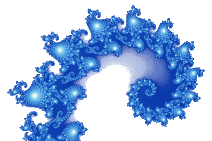04/06/2009, 16:30 — 17:30 — Amphitheatre Pa1, Mathematics Building
Pierre Cartier, IHES
The Life and Work of Grothendiek
Alexander Grothendieck is recognized as one of the greatest mathematical geniuses of the 20th century, and one of the most fascinating personalities. There are four phases in his life.
- A very difficult youth. Born in 1928 in Berlin from anarchist parents, a Russian Jewish father and a German mother, he was left behind in Nazi Germany at the age of 5 in a foster family, whom he revered deeply. Reunited with his mother in Paris in the year 1938, he (and his family) endured the hardships of the war and political camps, first under French, and then Nazi rule. His father died in Auschwitz, he and his mother survived through the help of antifascist huguenots resistants. After graduating from high school, he became for a short period a student in the University of Montpellier.
- His mathematical golden age. After meeting Henri Cartan in Paris in 1948, he worked on his doctoral thesis under the guidance of Jean Dieudonné and Laurent Schwartz (in Nancy). After defending his thesis in 1953, about problems of Functional Analysis, he went to Brazil, and concentrated on new mathematical directions. In a few years, he revolutionized algebraic geometry and homological algebra, by his various inventions: abelian categories, cohomology of sheaves, schemes, and general complex-analytic spaces. With Dieudonné, he was among the first professors of mathematics in the newly founded Institut des Hautes Études Scientifiques in Bures-sur-Yvette, in the vicinity of Paris. For ten years, he was the undisputed master in algebraic geometry, and created a successful school, with many disciples.
- Mathematical career (second phase). In the political turmoil of the late sixties, he left his position at the IHES, and after some years of wandering, became a professor in his alma mater in Montpellier. He had a few students (not of the caliber of his Paris students) and during bursts of mathematical inspiration, he wrote influential papers, often in an unpolished form, and never published in the conventional way. Nevertheless his work had an enormous influence, and many mathematicians still rely on his hints. One of the major recent successes has been the completion by Voewodsky, Levin and others of his programme of so-called motives.
- The ermit. He formally retired at the age of 60, and then wrote a kind of autobiography, entitled Récoltes et Semailles, a quite unusual kind of writing, deep and controversial. A few years later, he disappeared. Since then, he lived in a very small hamlet, in a very poor house, writing every night about his religious visions, and fighting the devil. Few people saw him in the past ten years, and he refuses all kind of visits, from family, from old friends, and from curious people.
![Mathematics @ Instituto Superior Técnico [Logo] Mathematics @ Instituto Superior Técnico](/img/DM_Ersatz.svg)

